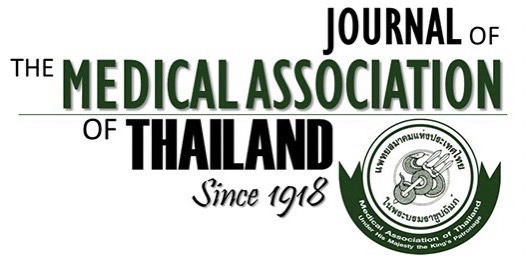Risk Factors of Distal Radius Fracture in Elderly Thai Population
Chalat Jaruwan¹, Pongsathorn Sitthisen¹, Waricha Eaimjinnasuwat², Thanakorn Jongjaid³, Thossart Harnroongroj⁴
Affiliation : ¹ Department of Orthopedic Surgery, Ratchaphiphat Hospital, Bangkok, Thailand; ² Department of Geriatric Medicine, Ratchaphiphat Hospital, Bangkok, Thailand; ³ Department of Community Medicine, Ratchaphiphat Hospital, Bangkok, Thailand; ⁴ Department of Orthopedic Surgery, Faculty of Medicine Siriraj Hospital, Mahidol University, Bangkok, Thailand
Background: Advances in medical technology have increased the life expectancy of the elderly population, leading to a higher proportion of elderly people in the healthcare system. As people grow older, their organ systems, including the musculoskeletal system, degenerate. This degeneration, including decreased muscle mass, reduced bone mass, and poor body balance, increases the risk of falls and fractures. Distal radius fractures are the second most common fractures in the elderly, following hip fractures.
Objective: To investigate risk factors for low-energy distal radius fractures in the elderly in Bang Khae District.
Materials and Methods: The retrospective study included patients aged 60 years and older with distal radius fractures due to low-energy trauma, residing in Bang Khae District. Data was collected between January 1, 2018, and December 31, 2022. Eighty patients met the inclusion criteria, with 60 patients in the fracture group and 20 patients in the no-fracture group. The comparison focused on identifying risk factors between the two groups.
Results: The risk of distal radius fracture was higher in females (OR 4.17, 95% CI 1.25 to 17.72, p=0.022). Protective factors included calcium intake (OR 0.06, 95% CI 0.01 to 0.34, p=0.001) and vitamin D intake (OR 0.03, 95% CI 0.00 to 0.28, p=0.002). No significant risk factors were found for surgical treatment and malunion.
Conclusion: Elderly female patients have a higher risk of distal radius fractures compared to males. The intake of calcium and vitamin D seem to be protective factors against distal radius fractures in the elderly.
Received 17 September 2024 | Revised 5 March 2025 | Accepted 18 March 2025
DOI: 10.35755/jmedassocthai.2025.4.298-303-01773
Keywords : Elderly; Distal radius fracture; Low energy trauma; Risk factors
All Articles
Download



